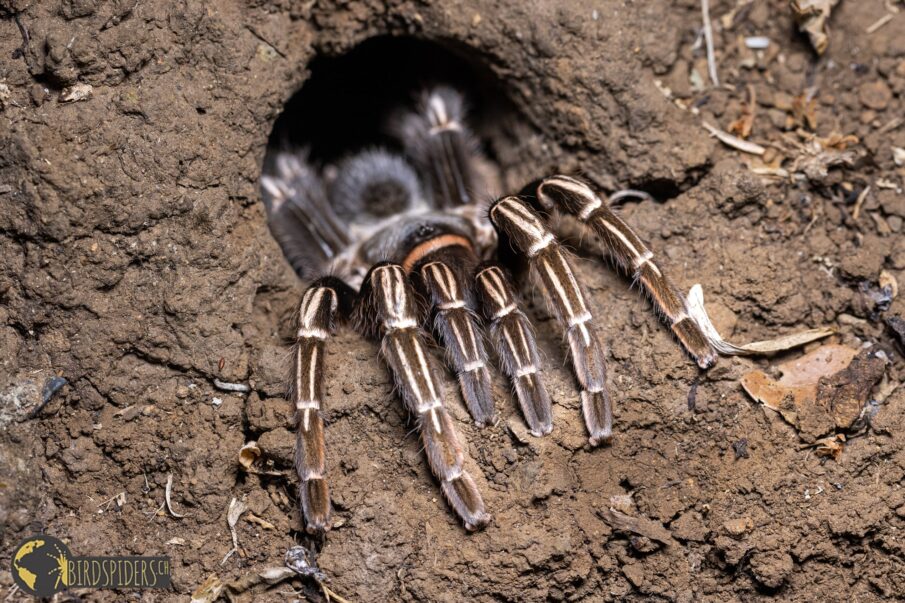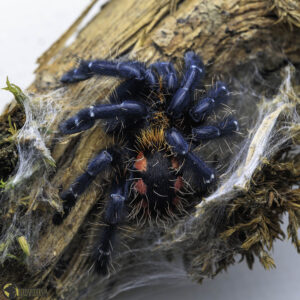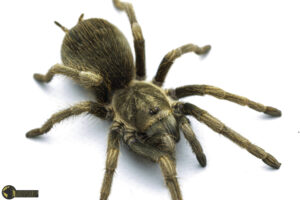The range of Aphonopelma seemanni in Central America is enormous. Costa Rican locations take up the bulk of the published material, but the occurrence of this species in neighboring Honduras, Nicaragua, and Guatemala is repeatedly cited. Additionally, this species can have a wide range of physical manifestations. However, these creatures are typically a dark gray-brown or even nearly black in color. Two white stripes run the length of each patella and continue down each tibia. There is a single, brief stripe on the metatarsus. A. seemanni specimens discovered in 2012 in Nicaragua by HÜSSER & EHRLER are a vivid blue in color. The longevity of this bluish hue is a mystery.
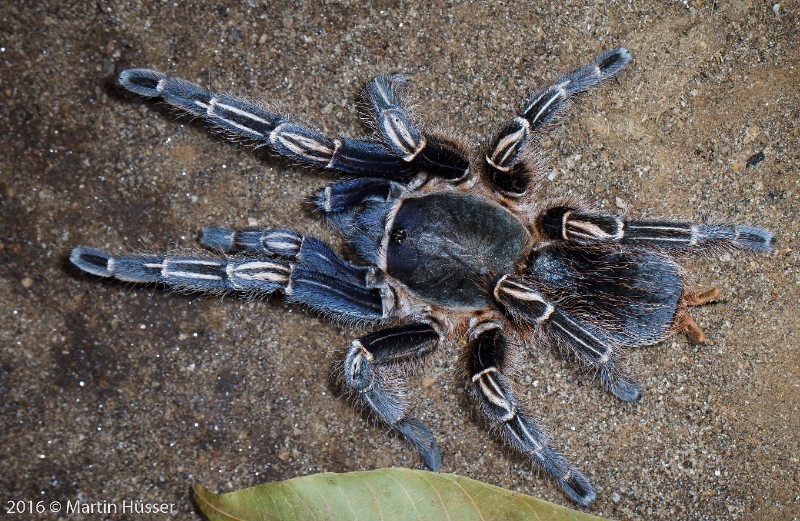
It is challenging to make a universally applicable description of husbandry due to the variety of distribution areas. Here, I employ information specific to Costa Rica due to the high probability that most imported animals originate there. The temperatures during the daytime rarely fluctuate and are, at 26–35°C, quite high. Costa Rica has a distinct dry season between the months of December and April, with the wet season lasting from May through November. But the amount of rain that falls from sky to ground varies widely. There is a similar range for humidity, from about 60% to 75%, with higher readings possible during times of heavy precipitation.

As it prefers to live in larger colonies, the culture-following Aphonopelma seemanni is often found in agricultural areas. The living burrows are typically 60cm or more underground and have a circular entrance lined with spider silk. This makes it simple for them to adapt to the year-round high temperatures. These living tubes can be set up on sloping ground or on a flat surface. As such, A. seemanni is a very adaptable species.
A. seemanni mating can be challenging. Due to the females’ natural aggression, it is not uncommon for a male to be eaten prior to a successful mating. Another possible explanation is that females and males from different regions of origin have moved so far apart that they can no longer mate. It takes about two to three months for the eggs to develop after a successful mating. Although successful offspring (i.e., not wild-caught cocoons) are extremely rare, several hundred newborn animals are possible.
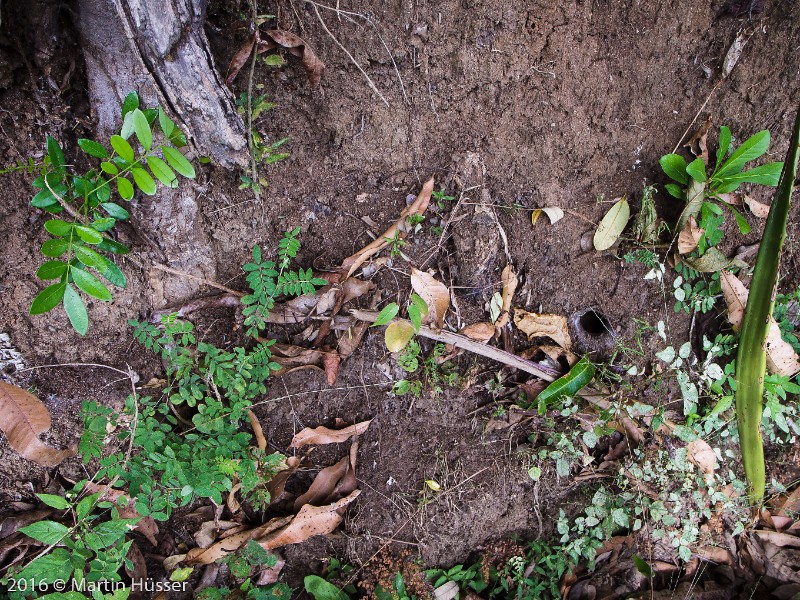
The country of Costa Rica occupies a prime position in Central America. In the north is Nicaragua, in the south is Panama, to the west is the Pacific Ocean, and to the east is the Caribbean Sea. It has a variety of ecosystems and landscapes, including tropical rainforests, beaches, mountains, and volcanoes, and is therefore famous for its rich biodiversity and stunning beauty. About a quarter of the land in Costa Rica is reserved as national parks and wildlife refuges. Costa Rica has a representative democracy with Spanish as the official language. Ecotourism and responsible growth have helped Costa Rica’s economy thrive.
The variety of flora and fauna in Costa Rica has earned it the country a reputation as a hotspot for ecotourism. The country is home to many different species thanks to its wide range of habitat types, which include tropical rainforests, cloud forests, dry forests, mangroves, and wetlands.
Some of the more than 500 mammal species found in Costa Rica include monkeys, sloths, tapirs, and bats. Parrots, toucans, and hummingbirds are just a few of the more than 900 species of birds found here. There are more than 200 different types of reptiles and amphibians in Costa Rica. This includes a wide variety of snakes, lizards, and turtles.
About 700 species of spiders can be found in Costa Rica. These spiders come from many different subfamilies. In Costa Rica, you can find spiders from a variety of subfamilies, including:
- Araneidae (orb-weaving spiders) (orb-weaving spiders)
- Thomisidae (crab spiders) (crab spiders)
- Salticidae (jumping spiders) (jumping spiders)
- Theridiidae (cobweb spiders) (cobweb spiders)
- Lycosidae (wolf spiders) (wolf spiders)
The many spider subfamilies of Costa Rica are vast, and this is just a small selection. The country is home to a wide range of spider species, with examples of each found in the country’s grasslands, wetlands, and tropical rainforests.

Costa Rica has a high diversity and abundance of spider species compared to its neighbors. While other Central American countries, like Panama and Nicaragua, have a similar number of spider species to Costa Rica, the exact species found in each country can vary.
One way to put a number on Costa Rica’s biodiversity is to count the number of species it’s home to. Another method would be to examine the country’s varying ecosystems and habitats, as well as the species richness of each. National parks and wildlife refuges are just two examples of the many protected areas in Costa Rica that work to keep the country’s rich biodiversity intact.
Along Costa Rica’s Pacific coast, the weather is tropical, with high humidity and consistent high temperatures throughout the year. Temperatures on the Pacific coast average around 27 degrees Celsius (81 degrees Fahrenheit).
In Costa Rica, the dry season is opposite the wet season. There are two distinct seasons here: the dry, or “summer,” months of December through April, and the wet, or “winter,” months of May through November. During the dry season, the Pacific coast of Costa Rica sees less rain and more sunny days. More rain falls and the humidity rises during the rainy season on the Pacific coast.
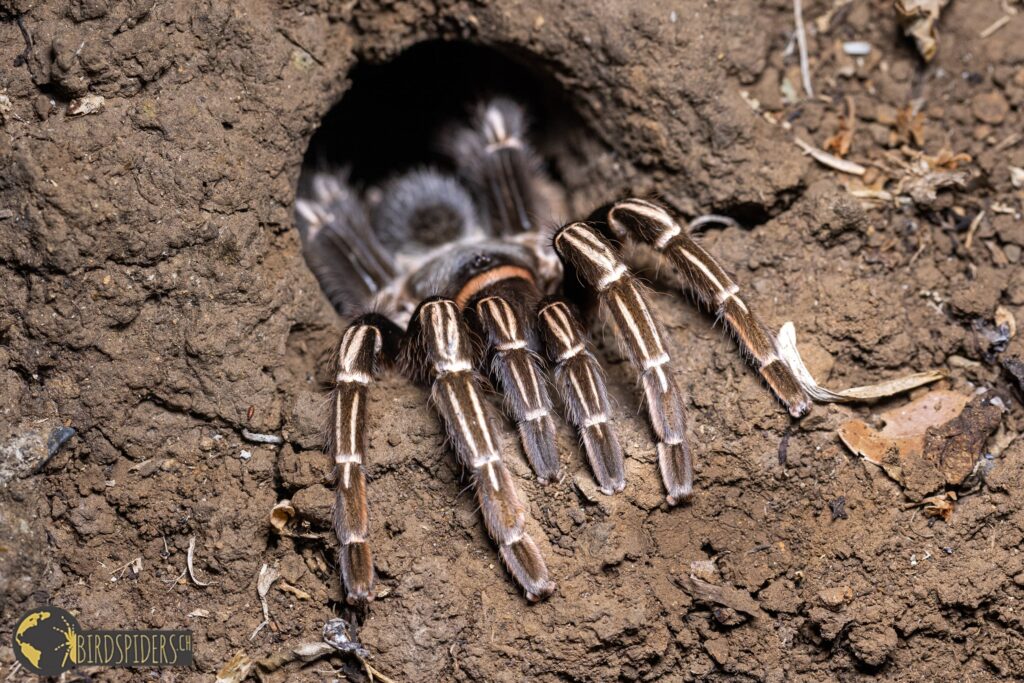
As can be seen, precipitation is less common during the dry season and more common during the rainy season. It’s important to keep in mind that these tendencies can shift from one year to the next and even from one location to another.
Numerous cultural traditions exist in Costa Rica, with variations in which ones are observed based on geographical location and local community. Communities along the Pacific coast of Costa Rica uphold a wide range of cultural traditions.
Traditional indigenous festivals, such as the Fiestas de los Diablitos, are held in the central valley region of Costa Rica, and there are also a number of festivals and celebrations held on the Pacific coast. The festival features regional indigenous dance, music, and food.
Handicrafts like woodcarving, pottery, and woven basketry are also common cultural activities along the Pacific coast. Traditional craft methods are kept alive through the sale of these handiworks to passing tourists.
The Pacific coast of Costa Rica is home to a wide range of peoples and cultures, many of which continue to observe and celebrate their ancestors’ customs and rituals to this day.
About a quarter of the country is protected in Costa Rica’s 27 national parks and wildlife refuges. National System of Conservation Areas (SINAC) is in charge of these preserves, and their mission is to safeguard the country’s flora, fauna, and other natural wonders.
For context, the United States is home to over 400 national parks and other protected areas, which together account for roughly 13% of the country’s total land area. The National Park Service (NPS), a branch of the Department of the Interior, is in charge of the upkeep and security of these locations.
A wide variety of actors, including governments, conservation groups, and local communities, are involved in the establishment and maintenance of national parks and other protected areas. The appropriate balance between conservation and development is a topic of frequent debate and discussion in both Costa Rica and the United States.
A tarantula’s life cycle
Burrowing tarantulas, also called trapdoor spiders, on Costa Rica’s Pacific coast have varying life cycles depending on species and environment. Although each species of tarantula has its own unique life cycle, there are some stages that are shared by the majority of them.
A tarantula spider’s first few years of life typically consist of a series of molts, during which it sheds its exoskeleton and grows in size. The spider will be quite young and spend most of its time hiding away in its burrow to avoid being eaten.
The tarantula will become more active as it matures and may emerge from its burrow in search of prey. Carnivorous tarantulas eat other insects like crickets, beetles, and grasshoppers.
Five to seven years is about how long it takes for a tarantula to reach sexual maturity. A female tarantula’s egg sac can hold hundreds of eggs, and she may produce several of them over the course of her lifetime. Spiderlings emerge from the eggs and go through multiple more molts before they reach adulthood.

Some species of tarantulas can live up to 30 years in the wild. A tarantula’s first decade of life is a crucial time for development, as that’s when the spider goes through many of its most significant changes.
All stages of a tarantula’s life are vulnerable to a variety of dangers. Loss of habitat is a major problem for tarantulas. When tarantulas and other animals are forced out of their natural habitats to make way for human development, they may have trouble finding adequate places to live and eat.
Predators such as birds of prey, mammals, and reptiles can pose a threat to tarantula populations. Tarantulas aren’t the only spiders at risk; wolf spiders and jumping spiders can sometimes be their undoing.
Changes in the weather pose another problem for tarantulas. Tarantulas’ ability to survive and reproduce, as well as the timing of critical life events like molting and hibernation, may be impacted by shifts in average temperatures and precipitation.
The survival and reproductive success of tarantulas is threatened by a variety of factors. Each tarantula species and its habitat presents its own unique set of challenges.
Costa Rica’s habitat loss is caused by a combination of social, economic, and environmental factors. The spread of human development—including urbanization, agriculture, and infrastructure—is a major factor in the destruction of natural habitats. Natural areas in Costa Rica are under increasing pressure to be developed, which threatens the survival of many animal and plant species.
Deforestation and logging are additional causes of habitat loss in Costa Rica. Many species could lose their habitat if trees and other plants were cut down, and doing so could have negative environmental effects such as soil erosion.
Additionally, climate change can play a role in the destruction of Costa Rica’s natural habitats. Some habitats may become less habitable as a result of climate change because temperatures and precipitation patterns shift.
When taken as a whole, the causes and effects of habitat loss are intricate and multifaceted. In order to effectively address this problem and protect the natural environment of Costa Rica, it is crucial to take into account the various drivers of habitat loss.
